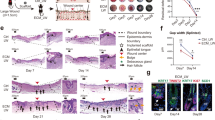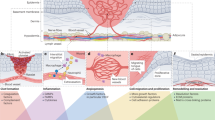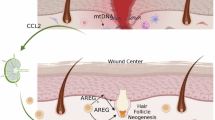Abstract
An extracellular matrix protein plays an important role in skin wound healing. In the present study, we engineered a recombinant protein encompassing the 9th and 10th type III domains of fibronectin, and 4th FAS1 domain of β ig-h3. This recombinant protein, in total, harbors four known-cell adhesion motifs for integrins: Pro-His-Ser-Arg-Asn (PHSRN) and Arg-Gly-Asp (RGD) in 9th and 10th type III domains of fibronectin, respectively, and Glu-Pro-Asp-Ile-Met (EPDIM) and Try-His (YH) in 4th FAS1 domain of big-h3, were designated to tetra-cell adhesion motifs (T-CAM). In vitro studies showed T-CAM supporting adhesion, migration and proliferation of different cell types including keratinocytes and fibroblasts. In an animal model of full-thickness skin wound, T-CAM exhibited excellent wound healing effects, superior to both 4th FAS1 domain of β ig-h3 or 9th and 10th type III domains of fibronectin. Based on these results, T-CAM can be applied where enhancement of cell adhesion, migration and proliferation are desired, and it could be developed into novel wound healing drug.
Similar content being viewed by others
Article PDF
Author information
Authors and Affiliations
Rights and permissions
This is an Open Access article distributed under the terms of the Creative Commons Attribution Non-Commercial License (http://creativecommons.org/licenses/by-nc/3.0/) which permits unrestricted non-commercial use, distribution, and reproduction in any medium, provided the original work is properly cited.
About this article
Cite this article
Jung, MY., Thapa, N., Kim, JE. et al. Recombinant tetra-cell adhesion motifs supports adhesion, migration and proliferation of keratinocytes/fibroblasts, and promotes wound healing. Exp Mol Med 39, 663–672 (2007). https://doi.org/10.1038/emm.2007.72
Published:
Issue date:
DOI: https://doi.org/10.1038/emm.2007.72
Keywords
This article is cited by
-
Targeted Disruption of TGFBI in Mice Reveals Its Role in Regulating Bone Mass and Bone Size through Periosteal Bone Formation
Calcified Tissue International (2012)



